BASEBALL HAIKU
American and Japanese Haiku and Senryu on Baseball
Edited with Translations by Cor van den Heuvel & Nanae Tamura

W. W. Norton & Company New York London
Copyright 2007 by Cor van den Heuvel
All rights reserved
The acknowledgments, on backmatter, are an extension of this copyright page.
The three haiku by Jack Kerouac (two in the American Baseball Haiku & Senryu section & one on football quoted in the introduction) are from Book of Haikus by Jack Kerouac, edited by Regina Weinreich, copyright 2003 by the Estate of Stella Kerouac, John Sampas, Literary Representative. Used by permission of Penguin, a division of Penguin Group (USA) Inc.
The prose excerpts by Edward J. Rielly quoted in the introduction are from Baseball Haiku: Bash , the Babe, and the Great Japanese-American Trade, by Edward J. Rielly. From The Cooperstown Symposium on Baseball and American Culture, 2001 , copyright 2002 State University of New York, College at Oneonta, edited by William M. Simons, permission of McFarland & Company, Inc., Box 611, Jefferson, NC 28640. www.mcfarlandpub.com
, the Babe, and the Great Japanese-American Trade, by Edward J. Rielly. From The Cooperstown Symposium on Baseball and American Culture, 2001 , copyright 2002 State University of New York, College at Oneonta, edited by William M. Simons, permission of McFarland & Company, Inc., Box 611, Jefferson, NC 28640. www.mcfarlandpub.com
Library of Congress Cataloging-in-Publication Data
Baseball haiku: American and Japanese haiku and senryu on baseball / Edited with translations by Cor van den Heuvel and Nanae Tamura.
p. cm.
ISBN: 978-0-393-06638-8
1. Haiku, American. 2. BaseballPoetry. 3. Haiku. 4. Senryu. I. Van den Heuvel, Cor, 1931II. Tamura, Nanae.
PS593. H3B37 2007
811'.04108357dc22
2007061179
W. W. Norton & Company, Inc., 500 Fifth Avenue, New York, N.Y. 10110
www.wwnorton.com
W. W. Norton & Company, Ltd., Castle House, 75/76 Wells Street, London
W1T 3QT
To Masaoka Shiki
Some Special Thank Yous
The editors would like to thank the following: William J. Higginson for help with several learned matters; Hiroaki Sato for finding a number of nait  baseball haiku for us and for sharing his knowledge of the present state of haiku and senryu in Japan; Emiko Miyashita for finding the baseball haiku by Arima Akito, her sensei, and several others; Shunichi Shibota for passing on to us the Taki Shunichi briefcase haiku; Hoshino Tsunehiko for help with finding baseball haiku, including his own; Yuko Otomo for reading through Kaneko Tohtas collected haiku looking for baseball haiku (there were none); and thanks to all our friends who were on the lookout for baseball haiku, whether they were able to find any or not.
baseball haiku for us and for sharing his knowledge of the present state of haiku and senryu in Japan; Emiko Miyashita for finding the baseball haiku by Arima Akito, her sensei, and several others; Shunichi Shibota for passing on to us the Taki Shunichi briefcase haiku; Hoshino Tsunehiko for help with finding baseball haiku, including his own; Yuko Otomo for reading through Kaneko Tohtas collected haiku looking for baseball haiku (there were none); and thanks to all our friends who were on the lookout for baseball haiku, whether they were able to find any or not.
Nanae Tamura would particularly like to thank both the Museum of Haiku Literature in Tokyo and the Shiki-Kinen Museum in Matsuyama for their kind guidance and great help; also Keiko Kawano for finding the baseball haiku of Imai Sei, her haiku teacher; and T ru Kiuchi, the chief editor of the haiku magazine Ten ( Marten ), for checking all the haiku by Ozawa Seiy
ru Kiuchi, the chief editor of the haiku magazine Ten ( Marten ), for checking all the haiku by Ozawa Seiy shi.
shi.
Note on Japanese Names : Except for editor Nanae Tamuras name and some of the names in the above thank you, all the names of Japanese in this book are (or should be) printed in the Japanese manner, family name first. This includes the names listed in the Book List, but not the names of Japanese-American authors nor those of Japanese authors when they are mentioned in the book titles or descriptions, if the book was published with their names printed in the Western manner.
The Score Card
INTRODUCTION: Warming Up
Baseball Haiku presents more than two hundred of the best haiku about baseball ever written by American and Japanese poets. Haiku and baseball were made for each other: While haiku give us moments in which nature is linked to human nature, baseball is played in the midst of the natural elementson a field under an open sky; and as haiku happen in a timeless now, so does baseball, for there is no clock ticking in a baseball gamethe games not over until the last out.
The few words of a haiku can bring to life a pitcher rotating the ball behind his back as he looks in at the catchers sign or they can reveal the over-confidence of a rookie getting picked off at first. Haiku can also find meaningful moments in the stands or even in a passageway to the locker room where all we hear as a player leaves the last game of his career is the sound of his cleats echoing on the floor.
Fans of haiku will want this book for its outstanding haiku. Fans of baseball will want it for the way the haiku let them relive the joys and the sorrows of the game. The unforgettable images that pop up out of the pages of this collection capture the actions and atmospheres, the moods and tensions, the weathers and memories of Americas national pastimeand Japans.
Haiku often relate us to nature by invoking one of the four seasons, either by naming the season or by suggesting it. Baseball, too, is a game for all seasons. It is played in the spring, summer, and fall, and is enjoyed in retrospect during the winter. When participants and fans read about and discuss the game during the off-season they are in what is called the hot stove league, from the days when people used to sit around a stove in the back of a country store or tavern to talk baseball. Baseball haiku follow that tradition, they help us to relive significant moments and aspects of the game. And they, too, can be enjoyed year-round.
In an essay on baseball haiku written for and read at a National Baseball Hall of Fame conference in 2001, Edward J. Rielly, one of the poets in this anthology, points out how fitting a topic baseball is for haiku:
Baseball is an especially appropriate subject for haikuHaiku usually seek some union of nature and humanity, and baseball grew out of a pastoral setting. The game still retains something of that natural setting, even in modern stadiums, but more so in minor league parks (the term ballpark itself recalls the games origins) where the diamond is outdoors, the fans close to the field, the grass real, the dirt rises in small puffs as the runner slides into base, and trees and hills loom beyond the fences. So, among the major team sports, it is baseball that most clearly touches the natural world that is a vital dimension of haiku.
In Japanese haiku, to ensure nature is present in the poem it must contain what is called a season word or kigo. For traditionalists, this is a rule: if there is no kigo the poem is not a haiku. The kigo is a word that tells a reader in which season the moment evoked in the haiku is taking place. It can be the name of the season or it can be a word like snow to indicate winter, or cherry blossoms to indicate spring. The word nait  (nah-ee-taahh, the Japanese adaptation of the coined English word nighter, meaning night game) indicates summer. It and the word baseball itself (either yaky
(nah-ee-taahh, the Japanese adaptation of the coined English word nighter, meaning night game) indicates summer. It and the word baseball itself (either yaky  or b
or b  sub
sub  ru ), also suggesting summer, are the only kigo directly referring to the game that are listed in Japanese haiku almanacs or saijiki . (The word baseball is also listed as a seasonal topic or kidai. ) That may be one reason so many Japanese baseball haiku seem to be about night games. The season words are arranged in such almanacs, along with haiku demonstrating their use, so that poets and readers alike can know which season custom and usage has dictated that a particular word will represent. Japanese poets have been using baseball as a subject for their haiku since 1890.
ru ), also suggesting summer, are the only kigo directly referring to the game that are listed in Japanese haiku almanacs or saijiki . (The word baseball is also listed as a seasonal topic or kidai. ) That may be one reason so many Japanese baseball haiku seem to be about night games. The season words are arranged in such almanacs, along with haiku demonstrating their use, so that poets and readers alike can know which season custom and usage has dictated that a particular word will represent. Japanese poets have been using baseball as a subject for their haiku since 1890.


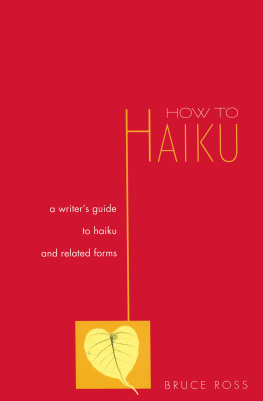

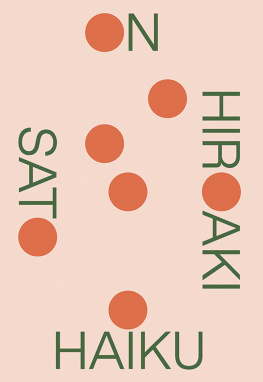
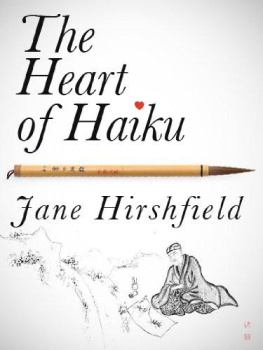
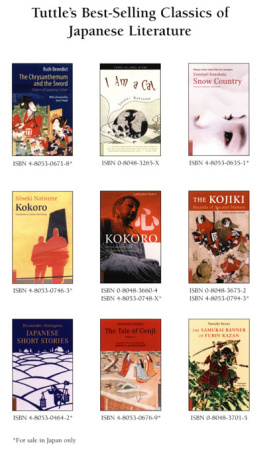


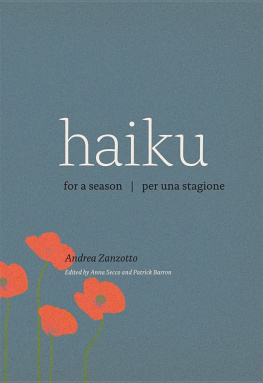


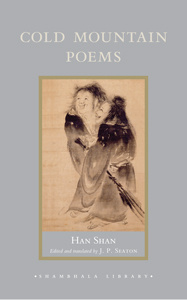

 , the Babe, and the Great Japanese-American Trade, by Edward J. Rielly. From The Cooperstown Symposium on Baseball and American Culture, 2001 , copyright 2002 State University of New York, College at Oneonta, edited by William M. Simons, permission of McFarland & Company, Inc., Box 611, Jefferson, NC 28640. www.mcfarlandpub.com
, the Babe, and the Great Japanese-American Trade, by Edward J. Rielly. From The Cooperstown Symposium on Baseball and American Culture, 2001 , copyright 2002 State University of New York, College at Oneonta, edited by William M. Simons, permission of McFarland & Company, Inc., Box 611, Jefferson, NC 28640. www.mcfarlandpub.com baseball haiku for us and for sharing his knowledge of the present state of haiku and senryu in Japan; Emiko Miyashita for finding the baseball haiku by Arima Akito, her sensei, and several others; Shunichi Shibota for passing on to us the Taki Shunichi briefcase haiku; Hoshino Tsunehiko for help with finding baseball haiku, including his own; Yuko Otomo for reading through Kaneko Tohtas collected haiku looking for baseball haiku (there were none); and thanks to all our friends who were on the lookout for baseball haiku, whether they were able to find any or not.
baseball haiku for us and for sharing his knowledge of the present state of haiku and senryu in Japan; Emiko Miyashita for finding the baseball haiku by Arima Akito, her sensei, and several others; Shunichi Shibota for passing on to us the Taki Shunichi briefcase haiku; Hoshino Tsunehiko for help with finding baseball haiku, including his own; Yuko Otomo for reading through Kaneko Tohtas collected haiku looking for baseball haiku (there were none); and thanks to all our friends who were on the lookout for baseball haiku, whether they were able to find any or not. shi.
shi. or b
or b  sub
sub  ru ), also suggesting summer, are the only kigo directly referring to the game that are listed in Japanese haiku almanacs or saijiki . (The word baseball is also listed as a seasonal topic or kidai. ) That may be one reason so many Japanese baseball haiku seem to be about night games. The season words are arranged in such almanacs, along with haiku demonstrating their use, so that poets and readers alike can know which season custom and usage has dictated that a particular word will represent. Japanese poets have been using baseball as a subject for their haiku since 1890.
ru ), also suggesting summer, are the only kigo directly referring to the game that are listed in Japanese haiku almanacs or saijiki . (The word baseball is also listed as a seasonal topic or kidai. ) That may be one reason so many Japanese baseball haiku seem to be about night games. The season words are arranged in such almanacs, along with haiku demonstrating their use, so that poets and readers alike can know which season custom and usage has dictated that a particular word will represent. Japanese poets have been using baseball as a subject for their haiku since 1890.